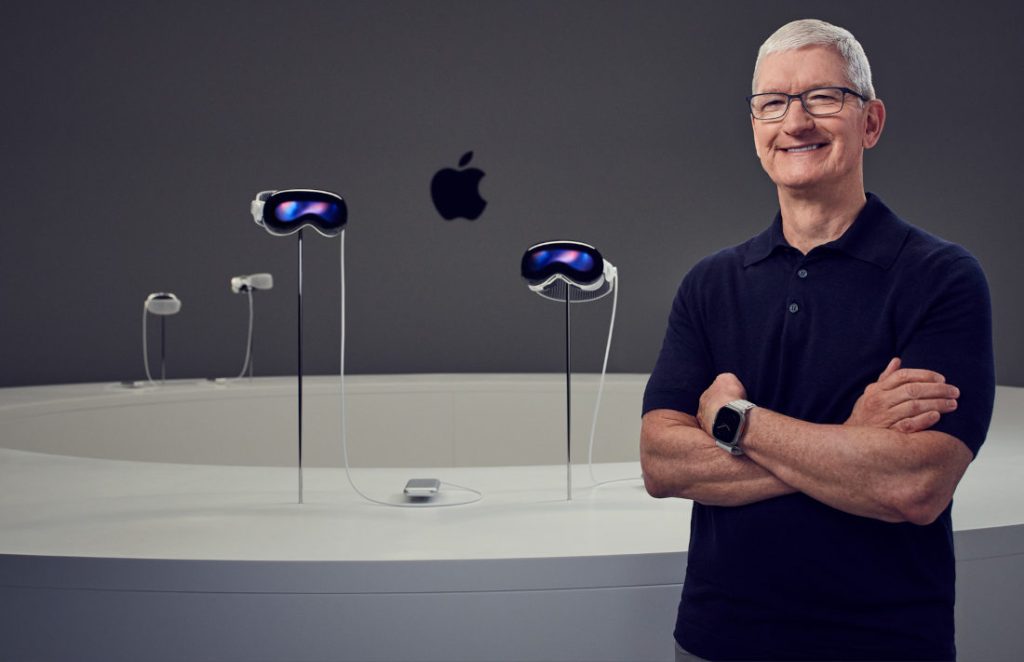
Apple is reconsidering its Vision Pro strategy after the recent debut of Meta’s Orion AR glasses at the Meta Connect 2024 event, as reported by Bloomberg’s Mark Gurman.
Introduced in June 2023, the Vision Pro headset marked Apple’s entry into spatial computing. However, the company now recognizes the need to “rethink its approach to headsets,” although the specifics remain uncertain.
According to Gurman, Apple faces significant challenges with the Vision Pro. The company aims to develop a range of devices with different features and price points, exploring various future directions for its Vision product line.
Meta’s Orion prototype stood out at its event, showcasing a 70-degree field of view and advanced eye-and-hand control. While the device is not yet ready for consumers, Gurman estimates that it could be available in “three to five” years, positioning Meta ahead of Apple in the AR space.
Gurman praised the Vision Pro’s technology, particularly for video viewing, but noted that it is more of a showcase than a practical consumer product. Its limitations, including short wear time, limited third-party software, and a lack of compelling features, restrict its broader appeal.
Additionally, the $3,500 price tag (before taxes and upgrades) places it out of reach for many consumers, and even a price reduction may not significantly drive sales.
Potential Future Directions for Vision Pro
Apple is evaluating several paths forward for the Vision Pro, as outlined by Gurman:
Status Quo Route: Keeping the Vision Pro largely the same while developing a cheaper version with lower-quality materials and technology. A second-generation Vision Pro with upgraded components is also a possibility.
Smart Display Route: Removing the on-board computer and battery from the Vision Pro and shifting some functions to the iPhone. This would reduce costs and make the headset lighter.
Smart Glasses Route: Developing smart glasses similar to Meta’s collaboration with Ray-Ban. Apple would leverage its expertise in chips, audio, and AI to create a widely appealing product.
AI and AirPods Route: Introducing a new version of AirPods Pro with external cameras and AI, providing a smart glasses-like experience without the need for frames.
Holy Grail Route: Pursuing standalone AR glasses with integrated components, high-performance lenses, and eye tracking. This has been a long-term vision for CEO Tim Cook, but development has been paused due to technical challenges.
Gurman emphasizes that Apple must accelerate its efforts in these areas to stay competitive. The company has faced setbacks in recent years, including struggles with its smart home strategy, the failure of its car project, and a late entry into AI.
While Apple’s financial strength, driven by the iPhone, allows for some missteps, its long-term success depends on leading the next wave of technological innovation before its competitors.
